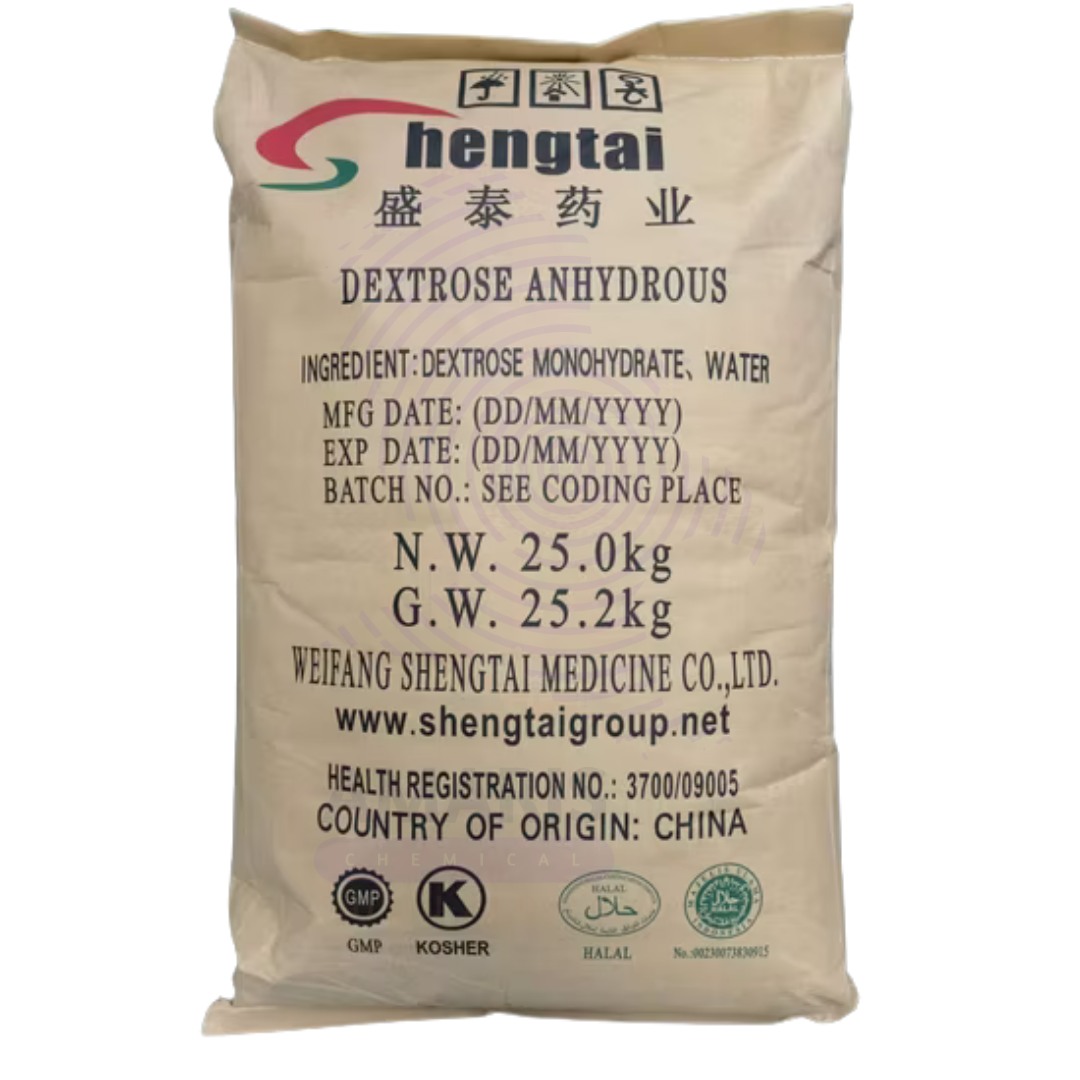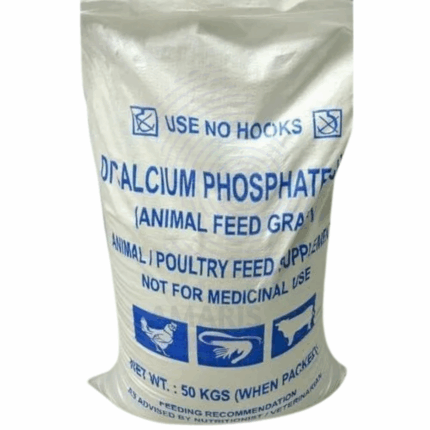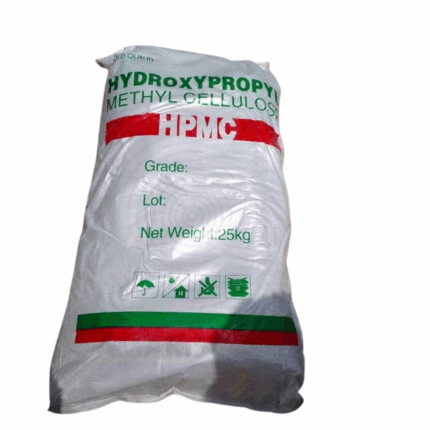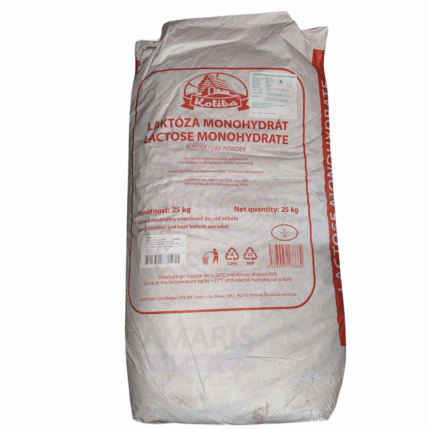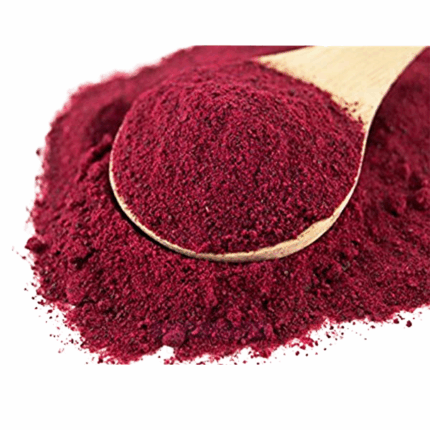

Dextrose Anhydrous BP Injectable
$ 2.00 Original price was: $ 2.00.$ 1.90Current price is: $ 1.90.
Dextrose Anhydrous BP Injectable is a sterile, highly purified crystalline form of glucose that serves as a critical energy source in intravenous therapy. It is widely used in parenteral nutrition, rehydration, and hypoglycemia management. The anhydrous form contains no water, allowing precise control of concentration in injectable solutions. Meeting British Pharmacopoeia (BP) standards, it ensures pharmaceutical-grade purity and sterility, suitable for direct injection or as a component in compounded IV fluids. It provides readily available carbohydrates metabolized to supply energy, regulate osmolarity, and maintain fluid-electrolyte balance in clinical care.
Dextrose Anhydrous BP Injectable
Primary Uses
Intravenous Fluid Therapy and Parenteral Nutrition
- Serves as a rapid and effective source of glucose in IV fluids, supporting metabolic energy needs in patients unable to consume or absorb nutrients orally or enterally.
- Corrects hypoglycemia swiftly in diabetic emergencies, neonatal hypoglycemia, and starvation.
- Maintains basal metabolic energy during fasting, surgery, or critical illness.
- Restores hydration and electrolyte balance when combined with electrolytes in isotonic or hypertonic fluids.
- Integral carbohydrate source in Total Parenteral Nutrition (TPN), used with amino acids, lipids, vitamins, and minerals.
- Provides caloric supplementation to prevent catabolism in malnourished or critically ill patients.
- Regulates osmolarity of IV fluids to manage fluid shifts and cellular hydration effectively.
Surgical, Critical Care, and Neonatal Applications
- Supports perioperative metabolic demands to prevent hypoglycemia and reduce surgical stress response.
- Assists postoperative patients in energy maintenance and fluid management.
- Used extensively in Intensive Care Units (ICUs) to manage glucose levels in critically ill patients with tight glycemic control.
- Supports energy needs of neonates, especially premature or sick infants who require parenteral feeding.
Pharmaceutical Manufacturing and Compounding
- Acts as a key raw material for compounding sterile injectable fluids such as dextrose saline, Ringer’s lactate with dextrose, and other balanced electrolyte solutions.
- Used as a diluent for intravenous medications, improving solubility and patient tolerance.
- Functions as a stabilizing agent by adjusting osmolarity and pH in injectable formulations.
Emergency and Ambulance Medicine
- Provides immediate glucose supplementation for severe hypoglycemia or diabetic coma in emergency situations.
- Supports metabolic needs during shock management when combined with volume replacement therapy.
Secondary Uses
Diagnostic Applications
- Administered intravenously in glucose tolerance tests to assess glucose metabolism and diagnose diabetes or insulin resistance.
Laboratory and Research Uses
- Supplies sterile glucose in cell culture media for in vitro growth and maintenance of biological cells.
- Used as a substrate in biochemical and enzymatic assays.
Veterinary Medicine
- Provides energy in veterinary parenteral nutrition and fluid therapy for animals undergoing surgery or critical illness.
Specialized Clinical Uses
- Used in patients with glycogen storage diseases or altered glucose metabolism requiring controlled glucose infusion.
- Employed in drug compatibility and stability testing with glucose-containing solutions.
- Basic Identification Attributes
- Chemical Name (IUPAC): D-Glucose
- Common/Trade Name: Dextrose Anhydrous BP Injectable
- CAS Number: 50-99-7
- HS Code: 1702.90.10
- Molecular Formula: C6H12O6
- Synonyms:
- Glucose Anhydrous
- Dextrose Monosaccharide
- Grape Sugar
- Corn Sugar
- Physical & Chemical Properties
- Physical State: White crystalline powder
- Solubility: Highly soluble in water (~909 g/L at 20°C)
- Melting Point: Approximately 146°C (decomposes)
- pH (1% aqueous solution): Neutral (~4.0–6.0)
- Stability: Stable under normal storage; hygroscopic (absorbs moisture)
- Molecular Weight: 180.16 g/mol
- Appearance: White, odorless, sweet-tasting crystalline powder
- Safety & Hazard Attributes
- Hazard Class (GHS): Not classified as hazardous
- Toxicity: Low toxicity; excessive infusion may cause hyperglycemia
- Irritation: Non-irritating under normal use
- Reactivity: Stable; incompatible with strong oxidizers and acids
- Storage & Handling Attributes
- Storage Conditions: Store in a cool, dry place away from moisture and contamination
- Container Type: Sealed moisture-proof containers (HDPE drums, glass bottles)
- Shelf Life: Typically 2–3 years when properly stored
- Handling Precautions: Avoid dust generation and moisture contamination; use PPE when handling bulk powder
- Regulatory & Compliance Attributes
- Regulatory Status: Compliant with British Pharmacopoeia (BP) standards for injectable grade
- Pharmacopoeia Standards: BP certified; also meets USP, EP specifications
- Transportation: Non-hazardous; standard pharmaceutical transport requirements apply
- Controlled Substance: Not controlled
- Environmental & Health Impact
- Biodegradability: Readily biodegradable; metabolized naturally
- Ecotoxicity: Low environmental impact
- Bioaccumulation: Not expected
Carcinogenicity/Mutagenicity: Not carcinogenic or mutagenic
Safety Handling Precautions
- PPE Required:
- Dust mask or respirator for bulk powder handling
- Safety goggles
- Gloves (nitrile or latex)
- Protective lab coat or apron
- Handling Guidelines:
- Minimize dust generation
- Avoid moisture exposure
- Use in well-ventilated areas, especially during bulk handling
- Storage Measures:
- Keep containers tightly sealed
- Store in dry, cool areas protected from light and incompatible substances
- Hygiene Practices:
- No eating, drinking, or smoking while handling
- Wash hands thoroughly after handling
First Aid Measures
- Inhalation: Move to fresh air; seek medical attention if irritation occurs
- Skin Contact: Wash with soap and water; seek medical advice if irritation persists
- Eye Contact: Rinse with plenty of water for at least 15 minutes; seek medical advice if irritation persists
- Ingestion: Not intended for oral ingestion as powder; seek medical advice in case of accidental ingestion
Firefighting Measures
- Fire Hazards: Non-flammable; may decompose at very high temperatures
- Extinguishing Media: Water spray, foam, dry chemical, CO₂
- Special Precautions: Prevent dust dispersion; use respiratory protection if needed
- Decomposition Products: Carbon oxides on combustion


 Preservatives(food)
Preservatives(food) Flavor Enhancers
Flavor Enhancers Acidulants
Acidulants Sweeteners
Sweeteners Antioxidants
Antioxidants Colorants(food)
Colorants(food) Nutraceutical Ingredients (food)
Nutraceutical Ingredients (food) Nutrient Supplements
Nutrient Supplements Emulsifiers
Emulsifiers
 Collectors
Collectors Dust Suppressants
Dust Suppressants Explosives and Blasting Agents
Explosives and Blasting Agents Flocculants and Coagulants
Flocculants and Coagulants Frothers
Frothers Leaching Agents
Leaching Agents pH Modifiers
pH Modifiers Precious Metal Extraction Agents
Precious Metal Extraction Agents
 Antioxidants(plastic)
Antioxidants(plastic) Colorants (Pigments, Dyes)
Colorants (Pigments, Dyes) Fillers and Reinforcements
Fillers and Reinforcements Flame Retardants
Flame Retardants Monomers
Monomers Plasticizers
Plasticizers Polymerization Initiators
Polymerization Initiators Stabilizers (UV, Heat)
Stabilizers (UV, Heat)
 Antifoaming Agents
Antifoaming Agents Chelating Agents
Chelating Agents Coagulants and Flocculants
Coagulants and Flocculants Corrosion Inhibitors
Corrosion Inhibitors Disinfectants and Biocides
Disinfectants and Biocides Oxidizing Agents
Oxidizing Agents pH Adjusters
pH Adjusters Scale Inhibitors( water)
Scale Inhibitors( water)
 Antioxidants(cosmetic)
Antioxidants(cosmetic) Emollients
Emollients Fragrances and Essential Oils
Fragrances and Essential Oils Humectants
Humectants Preservatives
Preservatives Surfactants(cosmetic)
Surfactants(cosmetic) Thickeners
Thickeners UV Filters
UV Filters
 Fertilizers
Fertilizers Soil Conditioners
Soil Conditioners Plant Growth Regulators
Plant Growth Regulators Animal Feed Additives
Animal Feed Additives Biostimulants
Biostimulants Pesticides (Herbicides, Insecticides, Fungicides)
Pesticides (Herbicides, Insecticides, Fungicides)
 Active Pharmaceutical Ingredients (APIs)
Active Pharmaceutical Ingredients (APIs) Excipients
Excipients Solvents(pharmaceutical)
Solvents(pharmaceutical) Antibiotics
Antibiotics Antiseptics and Disinfectants
Antiseptics and Disinfectants Vaccine Adjuvants
Vaccine Adjuvants Nutraceutical Ingredients (pharmaceutical)
Nutraceutical Ingredients (pharmaceutical) Analgesics & Antipyretics
Analgesics & Antipyretics
 Analytical Reagents
Analytical Reagents Solvents(lab)
Solvents(lab) Chromatography Chemicals
Chromatography Chemicals Spectroscopy Reagents
Spectroscopy Reagents microbiology-and-cell-culture-reagents
microbiology-and-cell-culture-reagents Molecular Biology Reagents
Molecular Biology Reagents Biochemical Reagents
Biochemical Reagents Inorganic and Organic Standards
Inorganic and Organic Standards Laboratory Safety Chemicals
Laboratory Safety Chemicals Specialty Laboratory Chemicals(Special Laboratory Equipment)
Specialty Laboratory Chemicals(Special Laboratory Equipment)
 Demulsifiers
Demulsifiers Hydraulic Fracturing Fluids
Hydraulic Fracturing Fluids Scale Inhibitors(oil)
Scale Inhibitors(oil) Surfactants(oil)
Surfactants(oil) Drilling Fluids
Drilling Fluids
 Dyes and Pigments
Dyes and Pigments Bleaching Agents
Bleaching Agents Softening Agents
Softening Agents Finishing Agents
Finishing Agents Antistatic Agents
Antistatic Agents
 Admixtures
Admixtures Waterproofing Agents
Waterproofing Agents Sealants and Adhesives
Sealants and Adhesives Curing Compounds
Curing Compounds Concrete Repair Chemicals
Concrete Repair Chemicals Anti-Corrosion Coatings
Anti-Corrosion Coatings
 Surfactants(cleaning)
Surfactants(cleaning) Builders
Builders Enzymes
Enzymes Solvents (Cleaning)
Solvents (Cleaning) Fragrances
Fragrances
 Electronic Chemicals
Electronic Chemicals Catalysts
Catalysts Lubricants
Lubricants Photographic Chemicals
Photographic Chemicals Refrigerants
Refrigerants Automotive chemicals
Automotive chemicals Pyrotechnic Chemicals
Pyrotechnic Chemicals
 Biodegradable Surfactants
Biodegradable Surfactants Bio-based Solvents
Bio-based Solvents Renewable Polymers
Renewable Polymers Carbon Capture Chemicals
Carbon Capture Chemicals Wastewater Treatment Chemicals
Wastewater Treatment Chemicals
 Pigments
Pigments Solvents(paint)
Solvents(paint) Specialty Coatings
Specialty Coatings Binders/Resins
Binders/Resins Additives
Additives Driers
Driers Anti-Corrosion Agents
Anti-Corrosion Agents Functional Coatings
Functional Coatings Application-Specific Coatings
Application-Specific Coatings
 Fresh Herbs
Fresh Herbs Ground Spices
Ground Spices Whole Spices
Whole Spices Spice Blends
Spice Blends Dried Herbs
Dried Herbs
 Leavening Agents
Leavening Agents Dough Conditioners
Dough Conditioners Flour Treatments
Flour Treatments Fat Replacers
Fat Replacers Decoratives
Decoratives Preservatives(baking)
Preservatives(baking)
 Plasticizers & Softeners
Plasticizers & Softeners Reinforcing Agents
Reinforcing Agents Adhesion Promoters
Adhesion Promoters Vulcanizing Agents
Vulcanizing Agents Antidegradants
Antidegradants Blowing Agents
Blowing Agents Fillers & Extenders
Fillers & Extenders Accelerators & Retarders
Accelerators & Retarders